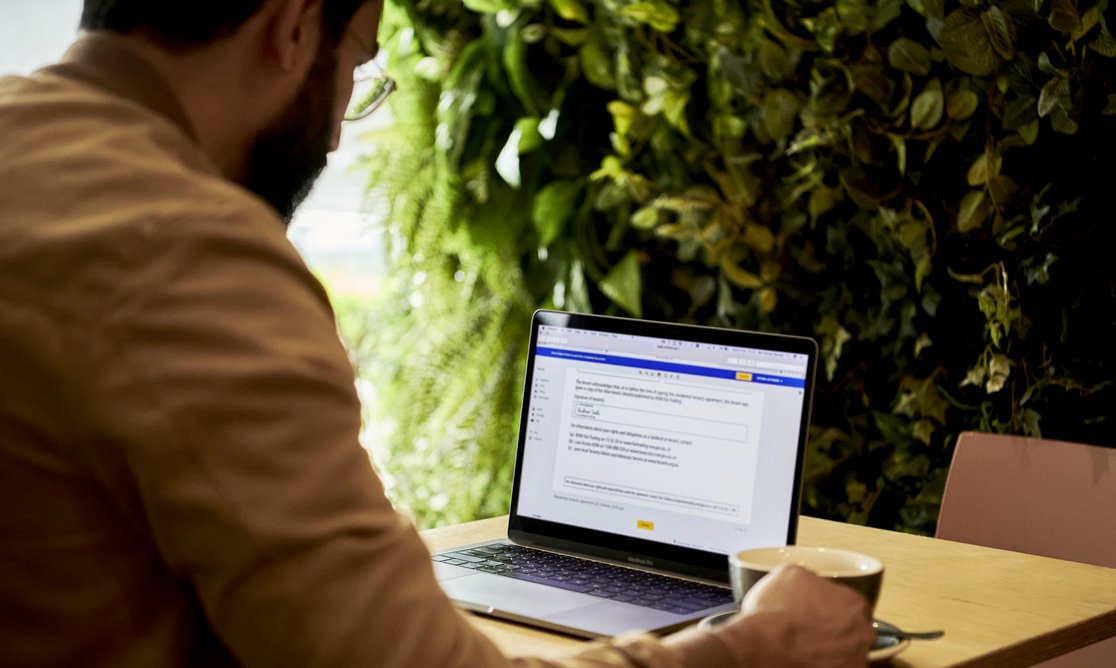- Find out what happens when you take up residence in what was once your investment property.
- Learn about moving back in to renovate, or to rent out a part of the property.
- Discover the implications for your income and your tax liability.
There are many reasons why investors choose to reside in what was once a solid, income-generating, investment property.
Perhaps you bought a property as an investment even though you couldn't afford to live in it yourself at the time, but now you can. Maybe you moved away for work but rented out your home so that you could stay in the local housing market.
Whatever the reason, you may now be ready to convert your rental property into your own home.
We look at what smart investors should consider before turning an investment property into a primary residence.

Ready to buy or refi?
Talk to a mortgage broker
- Get professional help to secure finance.
- Book a call online for a convenient time.
- Find a mortgage broker near you.

In this guide
Can you live in your investment property?
The short answer to this is, yes, it is possible for an investor to reside in their investment property. However, when deciding to move into an investment property so that it becomes a primary residence, the first thing you need to do is to inform the Australian Taxation Office (ATO) of this change.
A primary residence, also referred to as a principal place of residence (PPOR) by the ATO, refers to the residence in which you permanently reside yourself. This residence does not generate income for the owner and is also exempt from capital gains tax (CGT). There are also no tax-deductible expenses that can be claimed on a PPOR.
Investment properties on the other hand, are income-generating, and therefore the investor can claim tax deductions as a result. These include:
- Council rates
- Interest on the home loan used to buy the property
- Repairs and maintenance
- Property management fees
- Depreciation on fixtures and fittings
Making the change from investment property to PPOR will mean that an investor is no longer declaring rental income and is unable to claim any deductions.
Check the latest investment home loan rates.

Unloan Variable Home Loan (Owner)
Interest rate (p.a.)
5.99%
Comp rate^ (p.a.)
5.90%
Max LVR
80.00%
Application fee
$0.00
Monthly repayment
$2,695.08
Total repayment
$970,228.80
Highlights
- Get a rate discount every year.
- No application fees, no account fees, and no exit fees.
- Borrow up to 80% of your home’s value.
- Refinancing only.
Moving into your investment property
The logistical process of moving into your own investment property needs to be considered. If the property is vacant, with no tenant in place, you will be able to move straight in. Easy!
If a tenant is in place, however, this will be a little more difficult. Residential tenancy laws afford tenants various rights, once of which is adequate notice that an owner is wishing to return to the property to reside. To move back in you will need to issue any tenant with a Notice to Vacate, and give the tenant the correct notice period in accordance with legislation. As each state has varying requirements, it is essential to make contact with your property manager so that this can be achieved correctly.
You will also need to consider the loss of rental income received when assessing the financial implications of converting the property to a PPOR.
Renting out part of your home
Another avenue frequently explored by investors, is moving into the property whilst continuing to rent out a portion, such as a spare room or a granny flat. This provides the investor with a source of rental income, so has a financial benefit from a cash flow perspective, and still enables the investor to claim some deductions.
The amount you will be entitled to claim is dependent upon the area of the part of the property you intend to rent out. For example, if an investor is renting out a granny flat which is approximately one-fifth of the total property area, whilst residing in the remainder of the property, they will be able to claim one-fifth, or 20%, for deductible expenses such as rates, interest and depreciation.
It is important to note though, that a private arrangement, such as letting your long-lost uncle move in and reside in your flat rent-free, does not entitle you to claim tax deductible expenses. The property must be income-generating in order to claim any deduction.
Renovating an investment property
A number of investors choose to live in their investment properties, as a temporary PPOR, whilst undertaking renovations. This may seem a good option, particularly if you are undertaking some DIY works. However, there are some potentially adverse financial implications to consider.
Any asset newly installed as part of the renovation, such as a cooktop or oven for example, will be classed as previously used (by you) and therefore a second-hand asset for the purposes of depreciation. Legislation came into effect in 2017 to prevent deductions being claimed for the decrease in value of fixtures and fittings which have been used.
However, capital works, including the installation of new walls, roofs, bathrooms and kitchens, can still be claimed.
It is therefore essential for investors to consider the overall consequences of renovating whilst residing in an investment property. All equipment and furniture should be purchased and installed after the property ceases to be used as a PPOR, but major structural and capital works are able to be completed whilst the investor resides at the property without losing tax deductibility.
Tax implications
By far the biggest implications, when converting an investment property to a primary residence, are the tax implications. This includes significant changes to tax deductions and capital gains tax.
Tax deductions
Declaring your investment property to be your primary residence will put an end to your eligibility to claim any tax deductions against the property for council rates, home loan interest, repairs and maintenance and depreciation. However, should you continue to rent out part of the property, you may be able to claim a portion of these expenses.
Should this be an option for you, you will need to seek advice from your accountant or a quantity surveyor to ensure that the correct proportion of expenses can be claimed.
Capital gains tax
The biggest result of switching a property from investment to PPOR is its effect on capital gains tax. The outcome will depend on how long the property has been owned, how long it was rented out, and how long it served as your PPOR.
Although a property is exempt from CGT if it has been the PPOR during the entire period it was owned, the ATO requires disclosure and declaration of any profit on the sale of an investment property. This is considered to be a capital gain and will be declared in an investor’s income tax return and taxed at the taxpayer’s marginal tax rate, after calculating any CGT discount.
In the case of a dwelling which was an investment property for one part of the ownership period and a PPOR for another part, CGT is apportioned on a pro-rata basis. For example, if you sell a property which you have owned for four years and rented it out for a year before living in it yourself for three years, you are exempt from 75% of the capital gain (3 divided by 4 x 100). A further 50% discount would apply because the property was owned for longer than 12 months.
In this scenario, if the profit on sale of the property was $100,000, the non-exempt capital gain would be $25,000. This would be reduced to $12,500 after applying the 50% discount, and $12,500 would be declared on your tax return, to be added to your other income and taxed at your marginal income tax rate.
The steps in making the switch
Initially, the first steps for any investor seeking to convert their investment property into their PPOR is to seek professional advice from their accountant, who can explain in detail the tax implications of the conversion, taking into consideration the individual’s circumstances.
This will then be followed by ensuring that the ATO is aware of the change and making the necessary adjustments to ensure the owner can move into the property, and claim any applicable deductions if they decide to continue renting out a part of the property.
Accurate records would also need to be maintained, with exact dates, in order to calculate CGT when the property was finally sold.
Pros & cons
Pros
- Moving into your own property usually means an end to paying rent elsewhere.
- You will reduce your CGT liability when the property is sold.
- You can continue to claim some deductions if you continue to rent out a part of the property.
Cons
- You will no longer have rental income from the property.
- You cannot claim tax deductions for rates, home loan interest, repairs, &c, on a property which is your PPOR (except a portion of them if you rent out a room or granny flat).
- A part of any profit on sale of the property will still be subject to CGT.

Unloan Variable Home Loan (Investor)
Interest rate (p.a.)
6.29%
Comp rate^ (p.a.)
6.20%
Max LVR
80.00%
Application fee
$0.00
Monthly repayment
$2,782.44
Total repayment
$1,001,678.40
Highlights
- Get a rate discount every year.
- No application fees, no account fees, and no exit fees.
- Borrow up to 80% of your home’s value.
- Refinancing only.

Ready to buy or refi?
Talk to a mortgage broker
- Get professional help to secure finance.
- Book a call online for a convenient time.
- Find a mortgage broker near you.
Is it worth doing?
Paul and Lucy bought an apartment for $480,000 in 2014 as an investment property, because they could not afford the home loan repayments without having a tenant paying rent. However, by 2018 they had both received significant promotions and pay rises and could afford to forego the rental income and move into the apartment themselves.
Their combined income went down by $7,900 p.a. ($23,400 p.a. in rental income less $15,500 in deductible expenses), but since they were no longer paying rent of $13,000 to someone else they were ahead financially.
In 2021 they sold their apartment for $750,000, a capital gain of $270,000. They had recorded the exact dates on which they purchased the property, moved in themselves, and sold it. They calculated their CGT liability as 1,432 days (the rental period) divided by 2,479 days (their total ownership period) multiplied by $270,000 (the capital gain) multiplied by 50% (the discount for more than 12 months’ ownership) = $77,983.
They will pay a significant amount of tax on their taxable gain of $77,983, but had they not moved into their property in 2018 their taxable gain would have been much higher at $135,000.
However, converting an investment property into a PPOR is dependent on many factors and there is no single answer to this question to fit all circumstances. It is always best to seek advice from qualified professionals who can provide accurate information and data applicable to your own situation.

